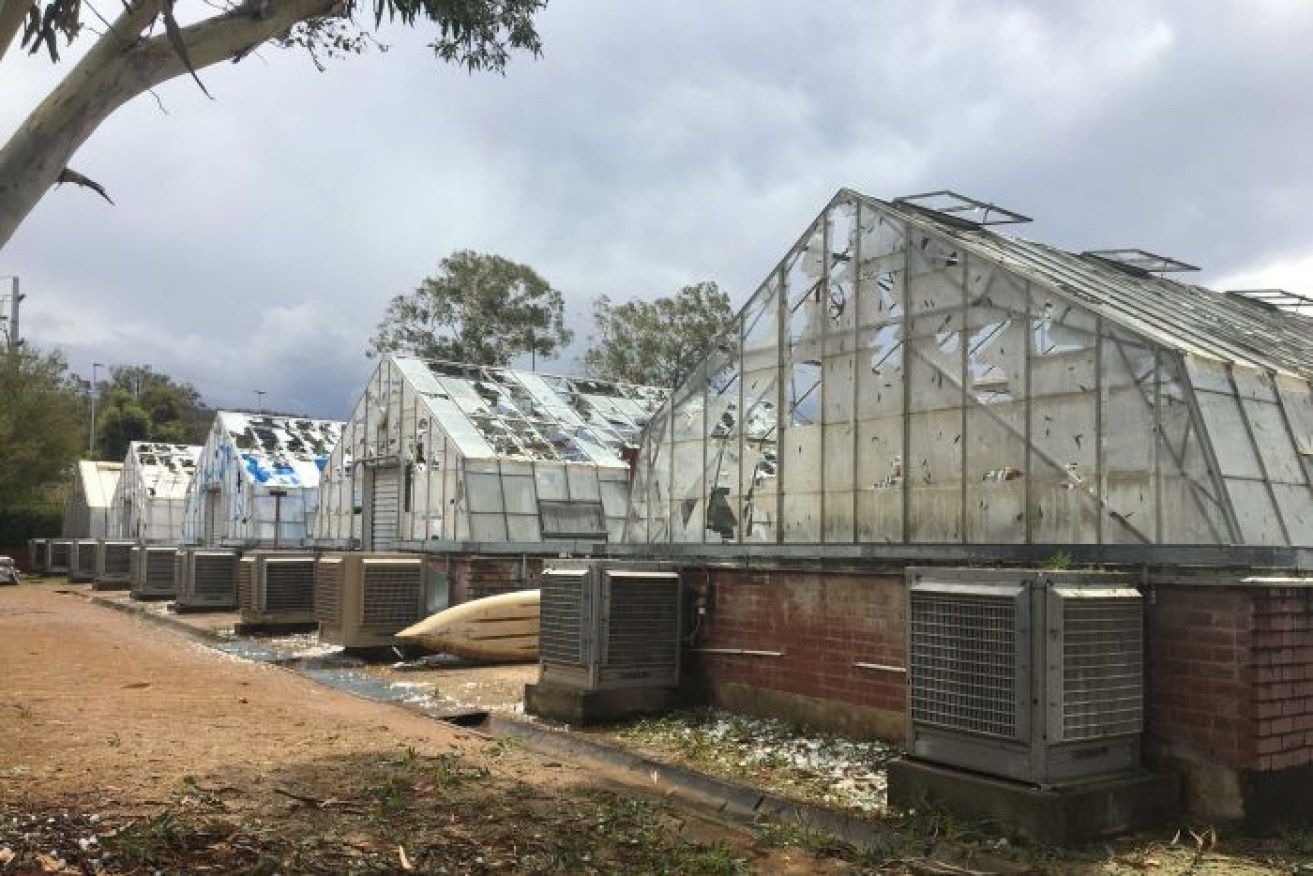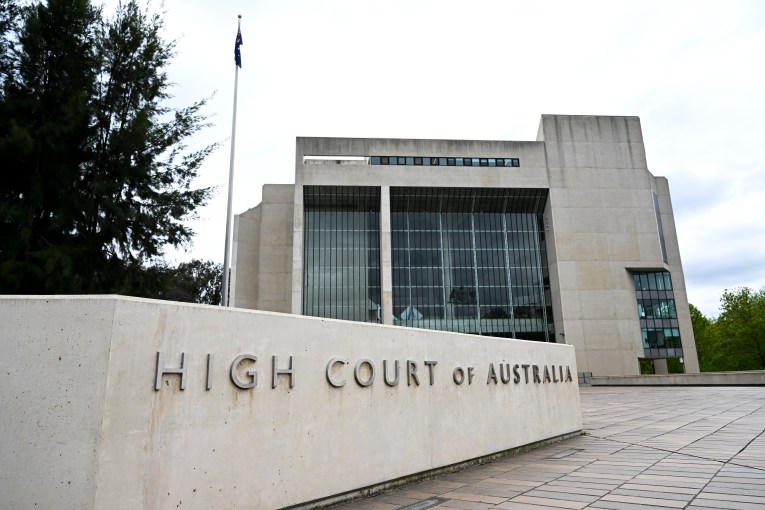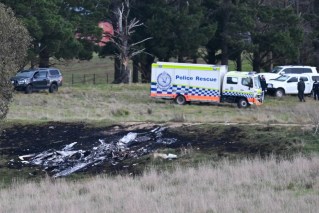‘Catastrophic’ hailstorm destroys years of CSIRO research


Glasshouses at the CSIRO in Canberra were badly damaged in Monday's storm. Photo: ABC/Saul Justine Newman
The destructive hailstorm that tore through the national capital, damaging cars and property, on Monday has been labelled a “catastrophe”.
The ACT Emergency Services Agency received a record number of more than 1900 calls for help when the storm swept through, taking out power to more than 1000 homes across the territory.
Campbell Fuller from the Insurance Council of Australia said the storm had been declared a “catastrophe”, and confirmed nearly 11,000 claims had been lodged in the ACT and Queanbeyan by early Tuesday.
This declaration means insurance claims will be expedited.
“The insurance council’s catastrophe declaration means those claims are prioritised by insurers, so insurers will be looking at how best to help those customers and help them as quickly as possible,” Mr Fuller said.
“It is certainly a very angry summer and we’re not even midway through the disaster season yet.”
A further 4000 claims were lodged from Monday’s storm in Sydney’s Sutherland Shire, and 3000 from Melbourne’s Sunday night storm.
Lucky I rode my bike today pic.twitter.com/nV9BaeWoS7
— Hilary (@hil_clix_pix) January 20, 2020
Cars damaged, institutions closed
Throughout Canberra, cars still line the streets in areas where the storm had been most ferocious, prompting lenience overnight from the ACT government’s parking inspectors.
“Access Canberra is aware that [the] thunderstorm and hail activity has led to a large number of damaged vehicles remaining in government-controlled car parks and roadside parking,” a statement from the department said.
“We understand that due to the number of vehicles impacted by the weather event that removal of vehicles, such as getting them towed, may take some time and an understanding approach will be taken.”
The Commonwealth Scientific and Industrial Research Organisation (CSIRO) was among the institutions hit worst, with large holes seen in the roofs of dozens of its glasshouses where experiments were underway.
Chief operating officer Judi Zielke said the storm damaged about 65 of the CSIRO’s glasshouses, destroying years of research.
“We’re very fortunate that none of our staff were hurt,” Ms Zielke said.
“Those 65 glasshouses, of course, held a lot of research and we’re really feeling for our scientists at the moment that are so dedicated to their work and have spent years working on some of the projects in there.
“Unfortunately, most of those projects will be totally lost.”
About 65 of our glasshouses were damaged in the #Canberra hailstorm yesterday, destroying research experiments. We feel for our scientists who are so dedicated to their work and have spent years working on some of these projects. https://t.co/diuUpX8D9d
— CSIRO (@CSIRO) January 21, 2020
The vast majority of the work being conducted at the CSIRO was aimed at improving crop sustainability. Researchers had been growing wheat, barley, legumes and cotton in the damaged glasshouses.
Much of the work had been underway for more than two years.
“[They were] largely focused on environmental research – how to reduce the amount of water, chemical and fertiliser use,” Ms Zielke said.
“For projects that potentially might have been close to the end of, say, two or three years work, that is really distressing.
“But I’m sure we’ll overcome and continue to improve our work going forward, but it is a great loss, and, of course, not just to CSIRO but also the companies and farmers involved in those projects.”
Meanwhile, national institutions including the National Museum of Australia and the Royal Botanic Gardens were closed on Tuesday, because of storm damage.
The Australian National University’s main campus was also closed, with “non-essential staff” directed to stay home as the extent of the damage to several buildings was assessed.
It came after the university was forced to close for several days earlier in January due to poor air quality from bushfire smoke.
Winter wonderland??? #hailstorm pic.twitter.com/pcBKjVJNJ4
— Rose (@RoseXuce) January 20, 2020
Private property damage still being assessed
Late on Monday, many people were still waiting for the State Emergency Service to visit their homes, where the giant hailstones had damaged roofs and caused flooding.
About 300 workers, assisted by the Australian Defence Force and ACT Fire and Rescue, responded to calls for help through the afternoon and into the night, but many locals were still waiting for assistance.
In Belconnen, Christine Stevens was at home when the storm struck.
Her house, two cars and vegetable garden were all damaged.
At 6.30pm she was still waiting on emergency services to come to her home and fix her roof, where water had leaked through and damaged light fittings.
“I was scared, I can tell you,” she said.
“I rang SES straight away and they said they’ll get here when they can.”
Ms Stevens said she was hoping one of her cars, which had stopped working since the storm, would recover from what she suspected was water damage.
In the meantime, she was hoping the rain would hold off until her roof was assessed.
“In the short-term, I hope they can put up a bit of tarp or something,” she said.








